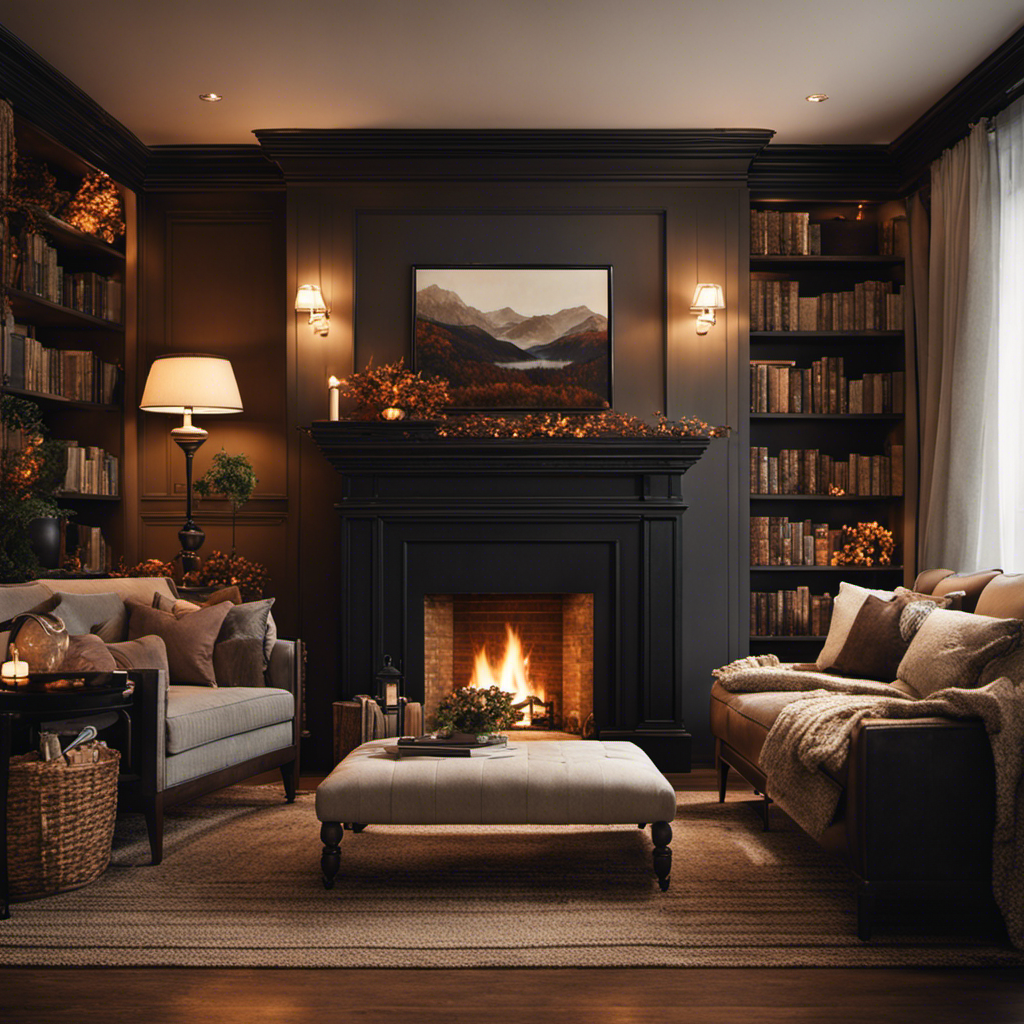As the fall season approaches and temperatures begin to drop, many homeowners seek ways to keep their houses warm without relying solely on heating systems.
This article aims to provide practical solutions for maintaining a comfortable indoor environment while minimizing energy consumption.
From harnessing natural sunlight to utilizing thermal curtains and window coverings, this guide offers a range of strategies suitable for those who desire to serve others by conserving resources and reducing utility costs.
Key Takeaways
- Install solar panels on the roof to harness natural sunlight and reduce reliance on traditional heating methods.
- Utilize weatherstripping and draft stoppers to maximize insulation in windows and doors, preventing air leakage and reducing heat transfer.
- Use thermal curtains and window coverings to effectively retain heat, block drafts, and provide additional insulation.
- Incorporate energy-efficient space heaters, proper thermostat settings, and ceiling fans to keep the house warm without relying on the central heating system.
Harnessing Natural Sunlight
One effective way to keep your house warm in the fall without turning on the heat is by harnessing the natural sunlight. By installing solar panels on your roof, you can capture the energy from the sun and convert it into usable electricity.
This renewable energy source can power your heating system, reducing your reliance on traditional heating methods and saving you money on utility bills.
Additionally, using reflective window film can help maximize the amount of sunlight that enters your home while minimizing heat loss. The film acts as a barrier, reflecting the sun’s rays back into the room and preventing heat from escaping through the windows.
Maximizing Insulation in Windows and Doors
To maximize insulation in windows and doors, homeowners can utilize weatherstripping and sealant to prevent drafts and reduce heat loss.
Insulating weatherstripping is an effective solution for sealing gaps and cracks around windows and doors. It is made of materials that provide a tight seal, preventing air leakage and reducing heat transfer. Weatherstripping can be installed along the edges of windows and doors, creating a barrier against the cold air outside.
Another option is to use draft stoppers, which are placed at the bottom of doors to block drafts from entering the house. These stoppers are usually made of fabric and filled with insulation material, ensuring maximum efficiency in preventing heat loss.
Utilizing Thermal Curtains and Window Coverings
By using thermal curtains and window coverings, homeowners can effectively retain heat and reduce energy loss during the fall season.
These specialized curtains are designed to provide additional insulation and prevent the cold air from entering the house through windows. They are made of thick, heavy fabric that traps heat inside and blocks drafts.
Additionally, thermal curtains can help reduce air drafts, which can make a significant difference in maintaining a warm and comfortable home environment.
Another option to consider is using window film, which is a thin, transparent sheet applied to the glass surface. This film helps to insulate windows, preventing heat from escaping and reducing heat transfer.
Implementing Energy-Efficient Space Heaters
Many homeowners find that using two or three energy-efficient space heaters strategically placed throughout the house can effectively warm up the space without relying on the central heating system. These space heaters are designed to provide warmth in a specific area, making them ideal for smaller rooms or spaces.
To maximize energy savings, it is important to set the thermostat at an energy-saving temperature and only use the space heaters when necessary. By utilizing energy-saving thermostat settings, homeowners can ensure that the space heaters are used efficiently and not wastefully.
Additionally, incorporating ceiling fans into the heating strategy can help circulate warm air throughout the room, making it feel even cozier. This combination of energy-efficient space heaters, proper thermostat settings, and utilizing ceiling fans can help homeowners keep their houses warm in the fall without relying on the central heating system.
Incorporating Layered and Thermal Clothing
How can homeowners effectively incorporate layered and thermal clothing to keep their houses warm in the fall without relying on the central heating system?
One of the most practical ways to stay warm indoors during the fall season is by wearing layered clothing. Layering provides several benefits, including insulation and the ability to adjust to fluctuating temperatures.
Start with a moisture-wicking base layer to keep the body dry. Add a middle layer made of insulating materials like wool or fleece to trap heat. Finally, top it off with an outer layer that acts as a barrier against the cold air.
Additionally, investing in thermal clothing can provide extra warmth. Thermal clothing options, such as thermal socks, long johns, and thermal sweaters, are specifically designed to retain body heat.
Frequently Asked Questions
How Can I Keep My House Warm in the Fall Without Turning on the Heat if I Don’t Have Access to Natural Sunlight?
To keep your house warm in the fall without relying on heat, consider using energy-efficient lighting to generate some warmth. Additionally, installing radiant floor heating can provide a comfortable and efficient heating solution.
Are There Any Specific Types of Insulation for Windows and Doors That Are More Effective in Keeping the House Warm?
Different types of weatherstripping for windows and doors can effectively keep a house warm in the fall without turning on the heat. Insulation options for windows and doors can also provide soundproofing benefits.
Can Thermal Curtains and Window Coverings Help Reduce Outside Noise as Well as Retaining Heat?
Thermal curtains and window coverings can provide both noise reduction and heat retention benefits. By utilizing insulating materials and blocking drafts, these window treatments can effectively maintain a warm and peaceful environment in your home.
What Are the Safety Precautions I Should Take When Using Energy-Efficient Space Heaters?
When using energy-efficient space heaters, it is important to follow maintenance tips and take necessary safety precautions. Regularly clean and inspect the heater, keep flammable objects away, use a grounded outlet, and never leave the heater unattended.
Besides Wearing Layered and Thermal Clothing, Are There Any Other Ways to Keep Warm Indoors During the Fall Without Using the Heat?
In addition to wearing layered and thermal clothing, there are several alternative heating methods to keep warm indoors during the fall without using the heat. These include utilizing energy-efficient appliances and implementing other insulation techniques.


